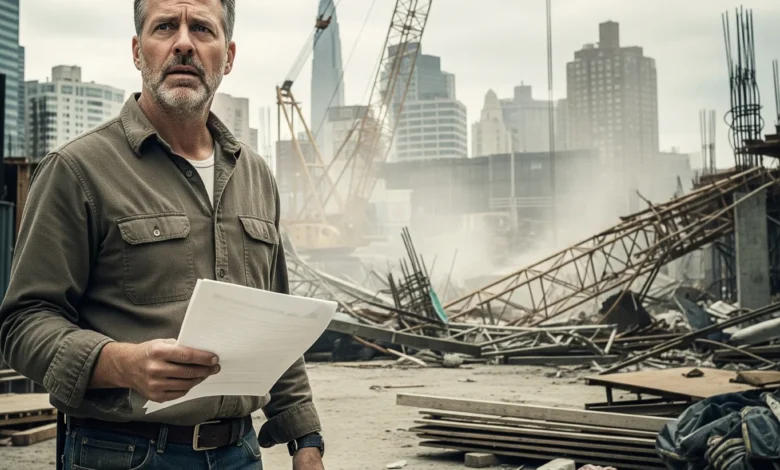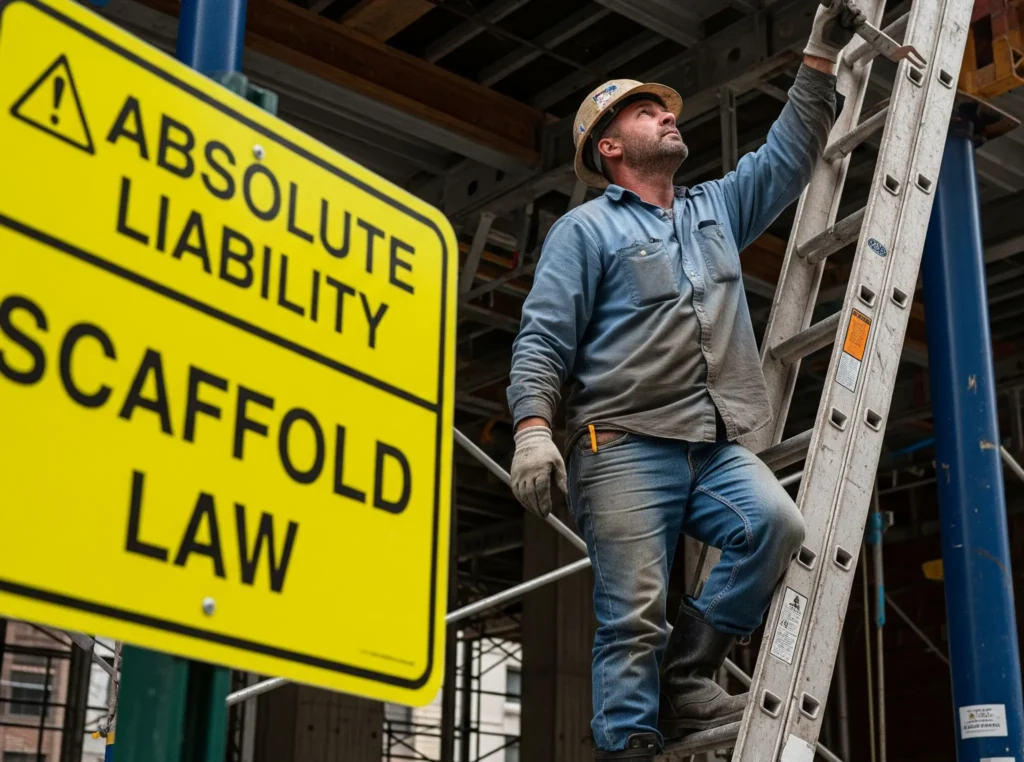Action Over Coverage Insurance: Your New York Contractor’s Survival Guide

Introduction: Why One Bad Day Can End Your Business
Picture this: You’re a contractor in New York, business is booming, and life’s good. Then BAM – one accident on a job site, and suddenly you’re staring down a lawsuit that could bankrupt your entire operation. Sounds dramatic? Unfortunately, it’s not. This is the harsh reality of doing construction work in the Empire State, where something called action over coverage insurance and avoiding an action over exclusion in New York can be the difference between staying in business and shutting down forever.
Here’s the thing – most contractors don’t even know they need this coverage until it’s way too late. I’ve seen too many hardworking folks get blindsided by action over claims, thinking their regular insurance had them covered. Spoiler alert: it probably doesn’t.
This guide will break down everything you need to know about action over coverage insurance, why it’s critical if you’re working in New York, and how to protect yourself from the financial nightmare that can follow. Trust me, understanding this stuff isn’t just smart business – it’s survival.
What the Heck is “Action Over Coverage Insurance” Coverage Anyway?

Let’s start with the basics, because the concept of “action over” can be confusing.
Breaking Down an “Action Over Claim”
An action over claim (also known as a third-party action over claim) occurs when an injured employee decides to sue someone other than their direct employer after receiving workers’ compensation benefits. It’s like getting a second chance, but legally.
Here’s how it typically plays out: Let’s say you’re an electrician working for a subcontractor. You fall off a ladder, break your leg, and collect workers’ comp from your employer. But then you think, “Hey, the general contractor didn’t provide a safe work environment,” so you sue them too. That’s an action over claim – you’re taking “action over insurance” against a third party beyond your direct employer.
The key thing to remember is that employees generally can’t sue their direct employer if they’re getting workers’ comp benefits. But they can absolutely go after the general contractor, property owner, or other parties they think contributed to their injury.
What Action Over Coverage Insurance Does
Action over coverage (sometimes called Labor Law coverage or third-party action over coverage) is insurance that protects you when someone files one of these lawsuits against you. It’s designed to cover contractual liability insurance situations where you might be held responsible for injuries to employees or subcontractors.
Think of it this way: without this coverage, if someone sues you for an action over a claim, you’re on your own. With it, your insurance company steps in and handles the legal mess and pays out if you’re found liable. It’s the difference between sleeping soundly at night and lying awake, wondering if your business will survive the next lawsuit.
Why New York Contractors Are Sitting Ducks Without This Coverage
Now here’s where things get interesting (and by interesting, I mean terrifying if you’re a contractor). New York has some of the strictest construction worker protection laws in the country, and they’re absolutely brutal for contractors and property owners.
The Infamous “Scaffold Law” (Labor Law 240 & 241)
New York’s Scaffold Law is like the boogeyman of the construction world. These laws impose what’s called “absolute liability” on property owners and general contractors for elevation-related injuries. And when I say absolute, I mean ABSOLUTE – even if the injured worker was being completely reckless and contributed to their accident.
Let me paint you a picture: A worker ignores safety protocols, doesn’t wear their safety harness properly, and falls from a scaffolding. In most states, their negligence would reduce the liability of others. But in New York? Nope. The property owner and general contractor can still be held 100% responsible. It’s like playing poker with a stacked deck – the house always wins, and you’re not the house.
And despite the name “Scaffold Law,” these cases aren’t just about scaffolding. We’re talking about any situation where height contributes to an injury. A hammer falling from a ledge? That’s covered. Someone falling into a hole during excavation? Yep, that’s considered a fall from height too. The law casts a pretty wide net.
The Dollar Signs Are Scary
Here’s the part that’ll make your wallet cry: New York Labor Law claims typically start around $100,000 and can easily rocket into the millions depending on the severity of the injury, the person’s job, and their age. A young construction worker with a permanent disability? We’re talking multi-million dollar settlements that can wipe out insurance limits faster than you can say “bankruptcy.”
I’ve seen single claims put entire companies out of business. It’s not just about the money – it’s about your livelihood, your employees’ jobs, and everything you’ve worked to build.
The Chain Reaction of Liability
To protect themselves from these massive lawsuits, property owners typically require indemnification clauses in their contracts with general contractors. The GC then passes this down to subcontractors in a lovely chain of “not-my-problem” clauses.
What this means is that when the building owner or GC gets sued, they’re going to come knocking on your door looking for you to cover their legal costs. If you don’t have proper action over coverage or have an action over exclusion in your policy, you’re standing naked in a hurricane.
Who Needs This Coverage?

Short answer: If you’re doing construction work in New York, you probably need it. Let me break this down:
All New York Contractors and Subcontractors: If you’re swinging a hammer, running electrical, doing plumbing, or any other trade work in NY, this coverage is essential. No exceptions.
General Contractors: These folks are often the first ones to get sued under NY Labor Laws, especially when subcontractors’ employees get injured. They need rock-solid protection.
Property Owners: Yep, even property owners need this coverage because they’re also strictly liable for jobsite injuries.
High-Risk Operations: Any business where employees might end up in situations where third-party lawsuits are possible should consider this coverage.
Consultants and Engineers: Here’s a shocker – even consultants aren’t immune. I’ve seen cases where a consultant climbed a ladder on a job site and took a tumble. Guess what? They can get sued just like anyone else.
The Myths That Can Kill Your Business
Let’s bust some dangerous myths about action over claims:
Myth 1: “These Only Happen in NYC”
Nope! While actions over claims are more common in dense construction areas like New York City, they can happen anywhere in the state. I’ve seen claims from small towns upstate that were just as devastating as big city lawsuits.
Myth 2: “It’s Only About Falls from Height”
While a lot of claims do involve falls from scaffolding, ladders, or roofs, that’s not the whole story. Falls from ground level into holes during excavation work also count as elevation-related injuries. The law is broader than most people think.
The Insurance Policy Minefield: Action Over Exclusion in New York
Here’s where things get tricky. Standard liability insurance policies typically exclude coverage for injury to employees because that’s supposed to be covered by workers’ compensation. Makes sense, right? But this creates a massive gap when it comes to action over claims.
Many insurance companies will either:
- Flat-out refuse to insure NY contractors for action over risks
- Slap on exclusions that eliminate coverage for NY Labor Law claims
- Attach confusing endorsements that gut your coverage
- These action over exclusions in New York can leave contractors dangerously exposed if not carefully reviewed before signing a policy.
Some common endorsements to watch out for:
- Injury to Employee Endorsements: These eliminate coverage for “safe place to work” violations
- Subcontractor/Independent Contractor Injury Endorsements: Similar to above, but for independent contractors
- Contractual Limitation Endorsements: These remove broad contractual coverage
- Cross Suits Exclusions: These can exclude coverage for suits between insureds
The frustrating part? Insurance companies call action over coverage “a lot of different things,” which makes it confusing as hell to figure out what you have.
The New Contractor Nightmare
If you’re a new contractor in New York, here’s some bad news: you often can’t buy action over coverage in your first year of business. Insurers want to see experience and a clean loss history before they’ll touch you with this high-risk coverage. It’s like needing experience to get a job but needing a job to get experience – a real catch-22.
The Consequences of Going Without Coverage
Let me be blunt: operating without action over coverage in New York is like playing Russian roulette with your business. Here’s what can happen:
Financial Ruin
A single action over a claim can generate out-of-pocket legal costs and settlements large enough to destroy a small business. I’m talking about the kind of money that’ll have you selling your house and liquidating everything you own.
Breach of Contract
If you signed a contract requiring specific insurance coverage and you don’t have it, you’re in breach. This can lead to additional lawsuits and financial penalties.
Loss of Business Opportunities
Major construction companies won’t let you on their job sites without proper insurance. No coverage means no work, and no work means no business.
Reputation Damage
Word travels fast in the construction world. Operating without proper coverage shows you’re not managing risk responsibly, which can kill your reputation and future opportunities.
How to Get and Keep Action Over Coverage Insurance

Work with Someone Who Knows This Stuff
First things first – you need an experienced insurance broker who understands the New York market and the complexities of action over coverage. Don’t try to figure this out with some random agent who’s never dealt with NY Labor Law claims. You need someone who can spot coverage gaps and explain all those confusing endorsements.
Be a Contract Detective
Before you bid on any project, put on your detective hat and thoroughly review the contract for insurance obligations, especially indemnity clauses. Here’s what to look for:
- Confirm Action Over Requirements Early: Find out if action over coverage insurance is mandatory before you waste time preparing a bid
- Negotiate Indemnification Clauses: Be very wary of broad clauses that make you responsible for claims “regardless of whether such claims are caused in whole or in part by the Owner or General Contractor.”
- Know When to Walk Away: If a contract requires coverage you don’t have and can’t get, it’s better to lose the bid than lose your business
- Get Legal Help: Have a lawyer who knows NY labor laws review your insurance policy and contractual agreements
Manage Your Subcontractors’ Insurance
Make sure all your subcontractors provide up-to-date Certificates of Insurance (COIs) showing they have proper coverage. Be aware of “Subcontractor Warranty Endorsements” in your policy – these can nullify your coverage if your subs don’t meet minimum requirements.
Remember: indemnification agreements are useless if the subcontractor doesn’t have adequate insurance to back them up.
Strategies for New Contractors
If you can’t get action over coverage insurance yet, here are some survival strategies:
- Be Extremely Picky: You have to be very selective about projects and carefully review every contract
- Look for Controlled Insurance Programs (CIPs): Some general contractors offer limited coverage through wrap-up policies
- Focus on Safety: Build a clean loss history by implementing robust safety protocols
Real-World Horror Stories
Let me share a couple of scenarios that’ll show you why this coverage is so important:
The Scaffolding Nightmare
A subcontractor’s employee gets injured when scaffolding installed by another subcontractor collapses. The injured worker collects workers’ comp, then sues the general contractor and property owner under Labor Law 240. Even though the GC and owner weren’t directly responsible for the collapse, they got hit with a multi-million dollar settlement because of New York’s absolute liability laws.
The Ladder Fall
A worker falls from a ladder, possibly due to not following safety protocols. They collect workers’ comp, then file an action over the claim against the property owner for unsafe working conditions. Despite the worker’s potential contribution to the accident, the owner gets held fully liable and faces costly litigation.
These aren’t made-up scenarios – this stuff happens every day in New York.
Beyond Action Over Coverage Insurance: Protecting Yourself
Insurance is crucial, but it’s not your only line of defense. Here’s what else you should be doing:
Safety Programs That Work
- Hold weekly toolbox talks on safety topics
- Require OSHA 10-hour training for all workers
- Implement task-specific training programs
Document Everything
- Conduct formal job-site risk assessments
- Keep detailed records of incidents and near misses
- Document all safety training sessions
This documentation can be invaluable when defending against claims and showing you’re serious about safety.
Plan for the Financial Reality
If you’re thinking about expanding into the New York market, make sure you understand the full cost implications of action over coverage insurance. Some companies avoid New York entirely because of these high legal and financial exposures.
The Bottom Line: Your Business Depends on This
Action over coverage isn’t just another insurance policy you can ignore or put off until later. In New York, it’s a matter of business survival. The state’s Labor Laws create a unique and challenging environment where a single accident can lead to financial ruin.
Here’s what you need to do right now:
- Review your current insurance policy with an experienced agent to identify any action over exclusions
- Understand your contractual obligations before bidding on any projects
- Implement strong safety protocols to minimize your risk exposure
- Work with professionals who understand New York’s unique legal landscape
Don’t wait until you’re facing a lawsuit to figure this out. By then, it’s too late. Take action now to protect your business, your employees, and your future.
Frequently Asked Questions
Q: What exactly is the New York Scaffold Law?
A: It’s a set of laws (Labor Law 240 & 241) that impose absolute liability on property owners and general contractors for elevation-related injuries, even if the injured worker was partially at fault.
Q: Can an injured employee sue their direct employer in New York?
A: Generally, no, if they’re receiving workers’ compensation benefits. Instead, they typically sue third parties like the general contractor or property owner.
Q: Why is action over coverage insurance so expensive in New York?
A: The strict liability laws lead to frequent multi-million dollar settlements, making insurers reluctant to provide coverage without charging high premiums.
Q: Can new contractors get action over coverage insurance immediately?
A: Often no. Insurers typically want to see experience and a clean loss history before offering this high-risk coverage.
Q: What should I look for in indemnification clauses?
A: Be extremely cautious of broad clauses that make you responsible for claims regardless of fault. Try to negotiate clauses that limit your liability for damages caused by your negligence.
Q: What happens if I operate without action over coverage?
A: You risk financial ruin, breach of contract issues, loss of business opportunities, and reputation damage.
Q: Are actions over claims only about falls from scaffolding?
A: No, they can include any incident where height contributes to an injury, including falls into holes during excavation work.
Q: What is an action over exclusion in New York?
A: It’s a clause in many liability insurance policies that excludes coverage for third-party injury claims — specifically those common under New York’s strict Labor Laws. If your policy includes an **action over exclusion in New York**, you could be left personally responsible for massive lawsuits involving subcontractors or jobsite injuries.
The construction business in New York is tough enough without having to worry about getting wiped out by a lawsuit. Get the right coverage, understand your risks, and protect what you’ve worked so hard to build. Your future self will thank you.




